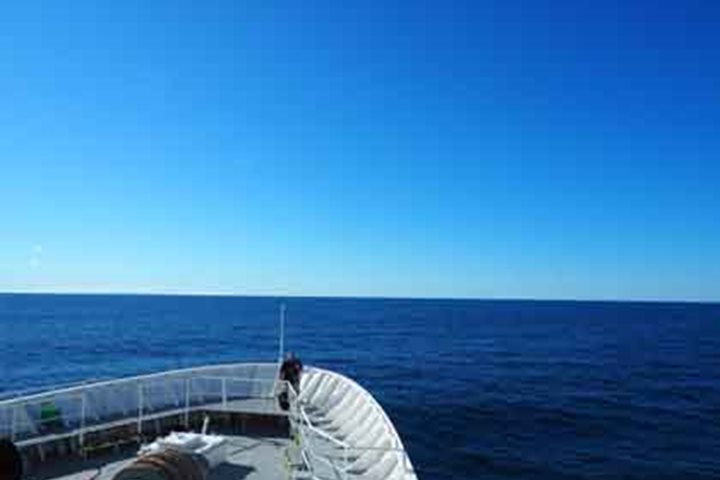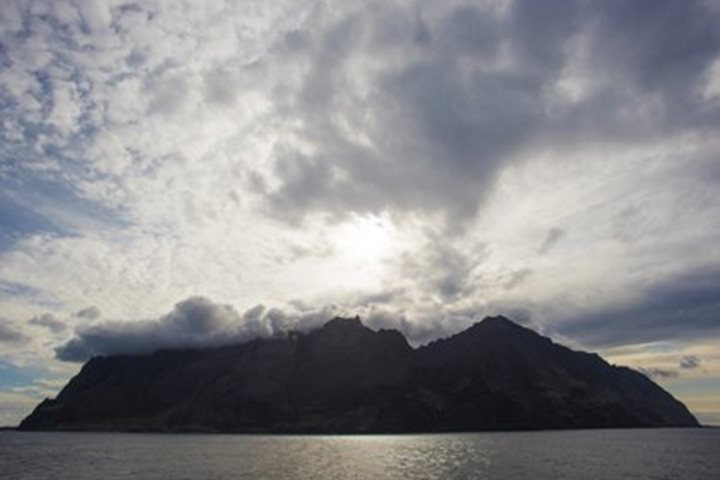Today we arrived early in Ancud after more than 30 hours in the open ocean with calm seas and great opportunities to see wildlife. We had seen black-browed and gray-headed albatross, white chinned petrels, and some humpback whales in the distance. The port of Ancud is almost on the mainland and is separated only by the Chacao Chanel from the continent. Today it was chilly.
We anchored some distance from the main port so our first encounter with Ancud was a choppy bay and cold temperatures. After travelling the mile to shore we started our adventure of choice, for 30 of us it was more cultural than wildlife.
We began our journey to Dalcahue, which is named after the Dalcas, a type of canoe that chilotes, the natives from the island, used in the past. Today it is no longer possible to see them, only the memories of these people paddling the channels of this archipelago linger. The town was quiet and we had the opportunity to see the local market and buy some wool souvenirs, which are famous on this island. People from all the nearby islands in the archipelago navigate to the market of Dalcahue to sell their products in the market including wool products like sweaters, socks, etc. And of course many vegetables as well as the famous potatoes from the island. Darwin visited this island and he discovered that the potato was harvested here before the Spanish settlements, so there is a high probability that potato comes originally from this island, at least some of the varieties. Afterwards we walked the streets and visited one of the most spectacular churches on the island, the Church of Dalcahue. There are more than 100 churches across the archipelago, declared a UNESCO World Heritage Monument.
Once we finished our exploration of this special town on the island we travelled to the oldest city of the island: Castro, famous for its church and Palafitos, which are houses built on stilts to compensate for the huge tidal changes in the region. At low tide they look like islands as they remain high and dry. But this is the old way that the people of Chiloe used to build their houses because they had no cars; instead they had boats and they were able to get to each other’s houses with their craft and leave in the morning on the high tide to go fishing.
We had lunch in one of the Palafitos that had been remodelled and today is a restaurant and boutique hotel. There are just a few houses that keep the culture, and they will probably disappear with modernity.
We finished our trip with a city tour of Ancud and visited the San Antonio Fortress, which was the last Spanish settlement in the Chiloe Island and had a great view of where National Geographic Explorer was anchored reminding us that once there were many ships anchored here. This port was the most important port in this part of the Pacific Ocean, in bygone days.








